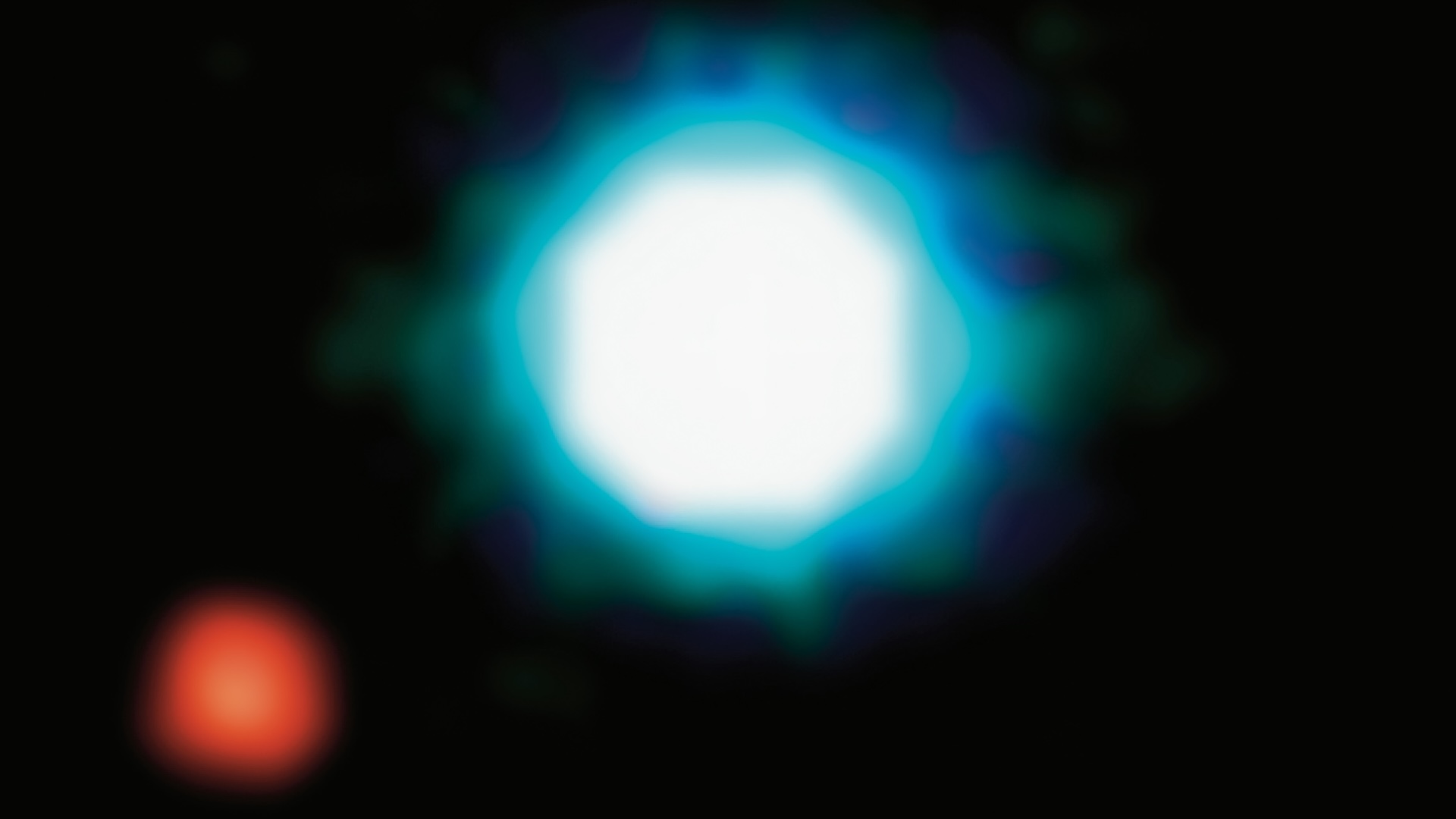
What it is: exoplanet 2M1207b
Where it is: about 170 light-years away in the constellation Centaurus
When it was shared: Sept. 10, 2004
Why it's so special: A few decades ago, the idea that planets may exist around other stars was purely theoretical. But this image offered the first visual proof of a Jupiter-like planet orbiting a star in a distant solar system. The shot, released 20 years ago this week, shows an exoplanet called 2M1207b orbiting a brown dwarf, called 2M1207.
This is like nothing in our solar system. The brown dwarf star is right on the boundary between a star and a planet, with a mass that's about 42 times less than the sun and 25 times greater than Jupiter. The planet, 2M1207b, is five times more massive than Jupiter.
Related: Astronomers want to change how we define a planet — again
"Given the rather unusual properties of the 2M1207 system, the giant planet most probably did not form like the planets in our solar system," Gaël Chauvin, an astronomer at the European Southern Observatory (ESO) and leader of the team of astronomers who conducted the study, said when the image was released. "Instead, it must have formed the same way our sun formed, by a one-step gravitational collapse of a cloud of gas and dust."
The image is a composite. 2M1207b orbits the brown dwarf from almost twice as far as Neptune does from the sun, but in the image, the planet appears positioned close to its star. The data used to capture it comes from three near-infrared exposures in different wavebands. It's a technique used to produce images for public consumption, but more importantly, to locate exoplanets around stars. That's because infrared data lessens the huge brightness difference between a star and a planet, making the latter easier to find.
It was produced using the 27-foot (8.2 meters) Yepun telescope — part of the Very Large Telescope — at the ESO's Paranal Observatory, located 8,645 feet (2,635 m) above sea level in the Atacama Desert in Chile.
It may have been the first, but 2M1207b was not the last world to be directly imaged. According to Las Cumbres Observatory, over 200 planets have since been discovered using direct imaging. A total of more than 5,600 alien worlds have been confirmed through various methods.
For more sublime space images, check out our Space Photo of the Week archives.







